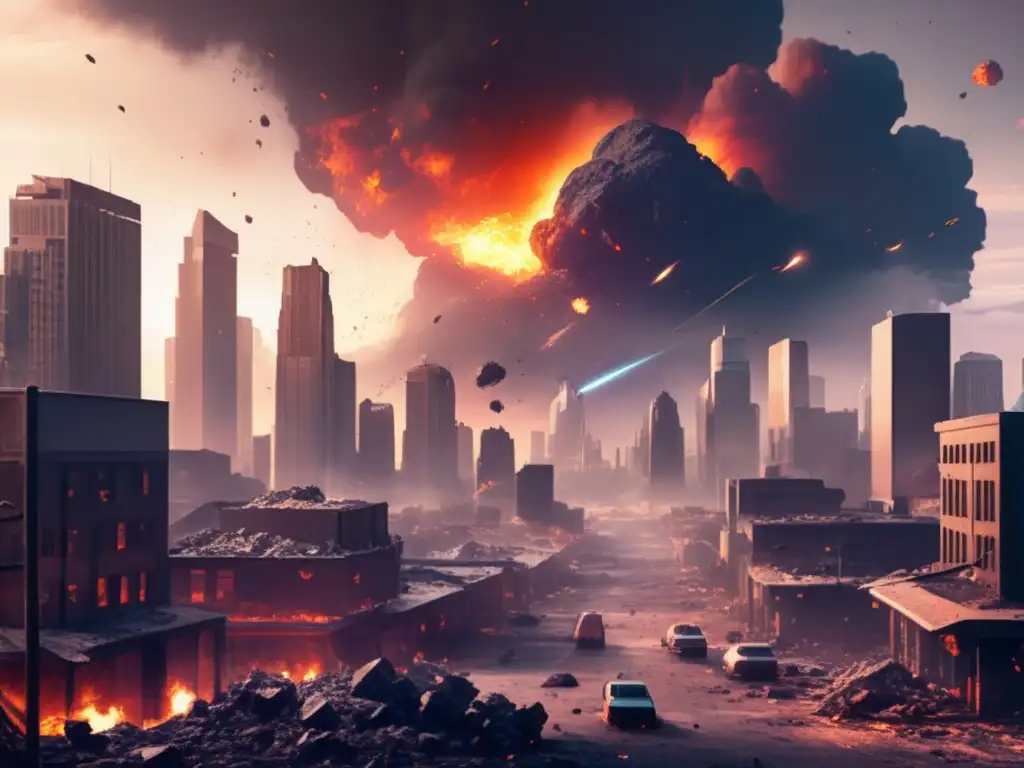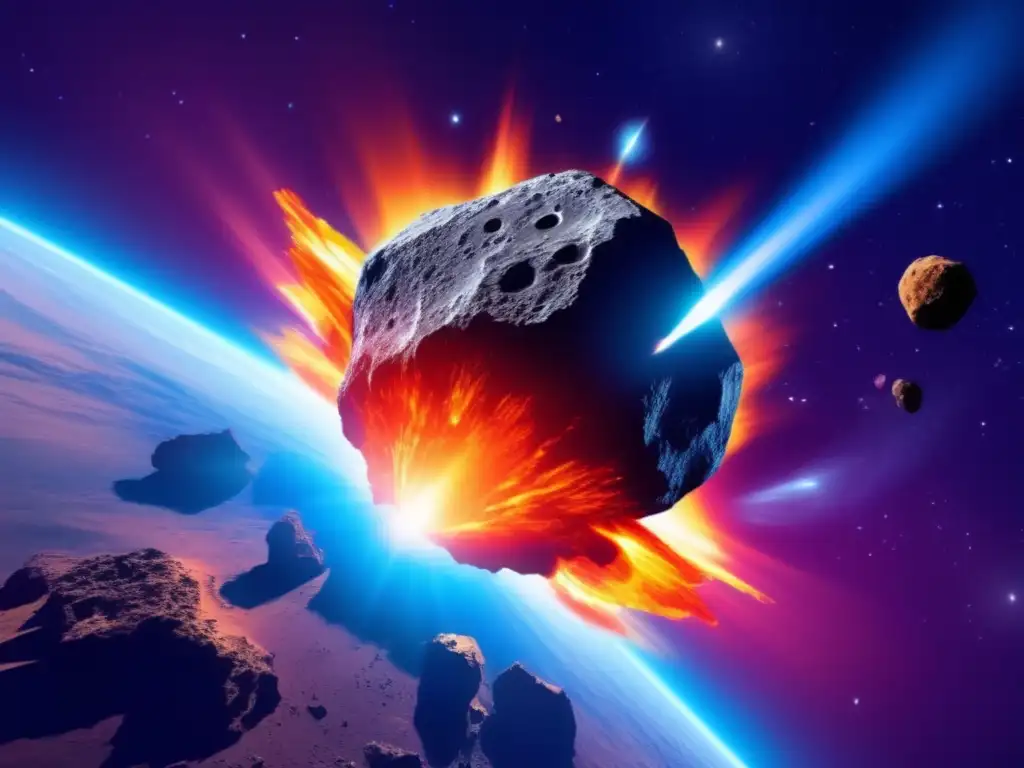From Dominance To Extinction: Asteroids And Dinosaurs

Introduction
The extinction of the dinosaurs has been a topic of fascination for scientists, historians, and the general public for years. While there are several theories about what caused their extinction, one possibility is that it was due to a catastrophic asteroid impact. In this article, we will explore the connection between asteroids and the extinction of the dinosaurs.
Asteroid Impact: The leading theory for Dinosaur extinction

The Chicxulub impact
In the 1980s, scientists found evidence of a large crater in the Yucatan peninsula of Mexico. The crater, known as the Chicxulub crater, is estimated to be roughly 65 million years old, coinciding with the extinction of the dinosaurs. Scientists believe that the impact of an asteroid or comet caused this crater, and that it was the event that led to the extinction of the dinosaurs. The impact is believed to have created a massive dust cloud that blocked out the sun, causing a worldwide cooling effect that led to the extinction of many species, including the dinosaurs.
Asteroid size
The asteroid that is believed to have hit the Earth was estimated to be about 10 km in diameter. Such a large asteroid would have caused significant damage upon impact, sending debris flying into the atmosphere and causing fires across the globe.
The aftermath
After the impact of the asteroid, the planet underwent a period of significant climate change. The dust cloud that had been created by the impact blocked out the sun, causing global temperatures to drop drastically. This had a domino effect on the environment, leading to widespread extinction of many plant and animal species, including the dinosaurs. It took millions of years for the Earth to recover from this catastrophic event.
Other asteroid collisions in history

Tunguska event
The Tunguska event is a well-known asteroid impact that occurred in Siberia in 1908. The impact was estimated to be roughly 30 times more powerful than the Hiroshima bomb, causing widespread devastation in the area. Fortunately, the Tunguska event occurred in a sparsely populated region, so there were no casualties. However, if the asteroid had hit a densely populated area, the outcome could have been much different.
Barringer Crater
The Barringer Crater, also known as Meteor Crater, is another well-known asteroid impact site. Located in Arizona, it is estimated to be about 50,000 years old and caused by an asteroid approximately 50 meters in diameter. The impact created a crater roughly 1.2 km wide and 170 meters deep.
Recent asteroid impacts
Asteroid impacts are still a very real threat to the planet. In recent years, several asteroids have come close to hitting the Earth, and some have even impacted the planet. Fortunately, none of these impacts have been catastrophic, but they serve as a reminder of the potential danger posed by asteroids.
Asteroid detection and prevention

NASA’s Near-Earth Object program
NASA has established the Near-Earth Object program to detect and track asteroids that could pose a threat to the planet. The program uses telescopes and other instruments to identify potentially hazardous asteroids and calculate their trajectories. If an asteroid is deemed to be a threat, NASA will work to develop a plan to deflect it off course before it can impact the planet.
Possible deflection methods
Several methods have been proposed for deflecting asteroids, including using nuclear weapons to break up the asteroid, using spacecraft to push the asteroid off course, and using a gravity tractor to alter the asteroid’s trajectory over time. While these methods are still in the development stage, they offer hope that we may be able to prevent a catastrophic asteroid impact in the future.
Frequently Asked Questions

-
What is the Chicxulub crater?
The Chicxulub crater is a large impact crater in Mexico that is believed to have been caused by an asteroid or comet. The impact is thought to have caused the extinction of the dinosaurs.
-
How big was the asteroid that killed the dinosaurs?
The asteroid that is believed to have killed the dinosaurs was estimated to be about 10 km in diameter.
-
Have any asteroids impacted the Earth since the dinosaur extinction?
Yes, several asteroids have impacted the Earth in the years since the dinosaur extinction. Fortunately, none of these impacts have been catastrophic.
-
What is NASA’s Near-Earth Object program?
NASA’s Near-Earth Object program is a program that is designed to detect and track asteroids that could pose a threat to the planet. The program uses telescopes and other instruments to identify potentially hazardous asteroids and calculate their trajectories.
-
What methods are being considered for deflecting asteroids?
Several methods are being considered for deflecting asteroids, including using nuclear weapons to break up the asteroid, using spacecraft to push the asteroid off course, and using a gravity tractor to alter the asteroid’s trajectory over time.
Conclusion
The extinction of the dinosaurs is one of the most significant events in the planet's history, and while there are still several theories about what caused it, the asteroid impact theory is the most widely accepted. The potential danger posed by asteroids is real, but thanks to new detection and prevention methods, we may be able to prevent a catastrophic impact in the future. It is crucial that we continue to research and study asteroids to better understand their potential impact on our planet.
Thank you for reading this article on the connection between asteroids and the extinction of the dinosaurs. We encourage you to share your thoughts and comments below and to visit www.asteroidrealm.com for more information on this fascinating topic.
Additional Resources

- NASA Planetary Defense Program Overview
- ESA Space Situational Awareness: Life on Earth and space debris
- How to Defend Earth From Asteroids
 Asteroids: The Skyborne Catastrophe That Ended Dinosaurs
Asteroids: The Skyborne Catastrophe That Ended Dinosaurs The Dinosaurs' Last Stand: The Asteroid Impact Theory
The Dinosaurs' Last Stand: The Asteroid Impact Theory Earth's Darkest Day: The Asteroid That Erased Dinosaurs
Earth's Darkest Day: The Asteroid That Erased DinosaursIf you want to discover more articles similar to From Dominance To Extinction: Asteroids And Dinosaurs, you can visit the Asteroids and Dinosaurs category.
Leave a Reply

Articulos relacionados: